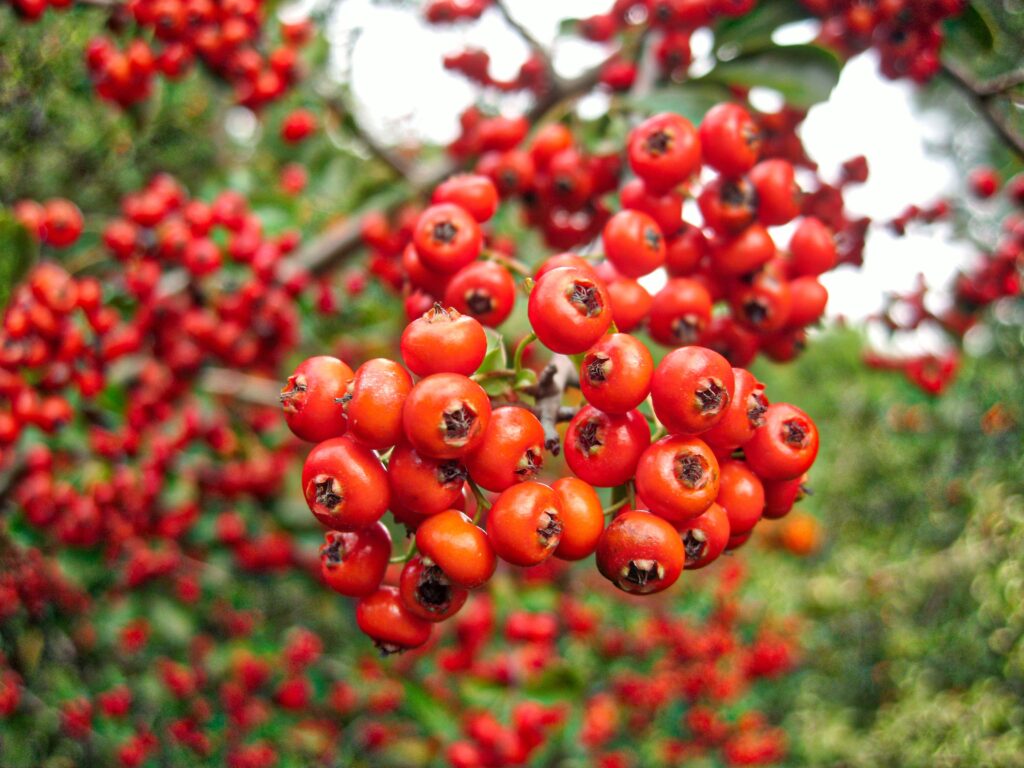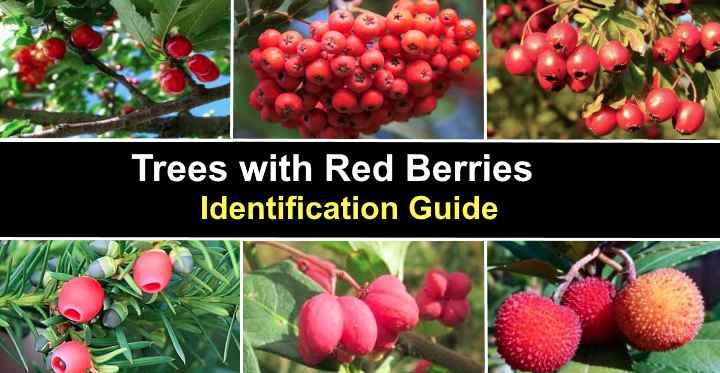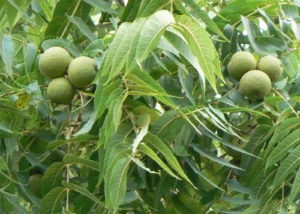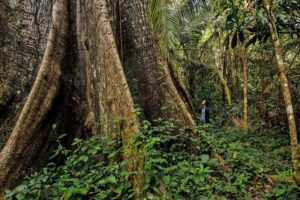Red Berry Tree Identification: A Comprehensive Guide
Red berry trees are known for producing vibrant, colorful fruits that not only add visual appeal to landscapes but also serve as a valuable food source for wildlife. Identifying trees by their red berries can be a rewarding experience, as many species have distinctive characteristics that make them easy to recognize. From the classic holly tree to the less common hawthorn, these trees are found across a variety of habitats in the U.S., providing beauty and ecological benefits.
In this article, we will provide a detailed guide to red berry tree identification, discussing the most common tree species that produce red berries, their unique features, and how to recognize them. We’ll also cover the ecological importance of red berry trees and answer frequently asked questions (FAQs) related to these trees.

Types of Red Berry Trees in the U.S.
The United States is home to many species of red berry-producing trees, ranging from evergreen species like holly to deciduous varieties such as hawthorn and serviceberry. These trees often have easily recognizable features, such as their leaves, bark, and berry clusters. Identifying these trees can be done by observing the shape, size, and arrangement of the berries, as well as the characteristics of the leaves and bark.
Below is a table showing the most common red berry-producing trees in the U.S., their berry characteristics, and the percentage of these trees in the country.
| Tree Species | Berry Type | % Share in U.S. Tree Population | Description of Berries |
|---|---|---|---|
| Holly (Ilex spp.) | Bright Red Berries | 7% | Glossy red berries that grow in clusters, typically on female trees |
| Hawthorn (Crataegus spp.) | Small Red Drupes | 4% | Small, round berries with a single seed, often called “haws” |
| Yew (Taxus spp.) | Fleshy Red Arils | 2% | Bright red, cup-shaped berries with a single seed inside |
| Serviceberry (Amelanchier spp.) | Red-Purple Berries | 3% | Small, round berries that change from red to purple when ripe |
| Crabapple (Malus spp.) | Small Red Apples | 5% | Small, round, apple-like fruit that turns red when mature |
| Dogwood (Cornus spp.) | Bright Red Drupes | 6% | Bright red, oblong berries that grow in clusters |
| Winterberry (Ilex verticillata) | Glossy Red Berries | 3% | Vibrant red berries that persist throughout winter |
| Chokecherry (Prunus virginiana) | Red Drupes | 2% | Small, bright red berries that are bitter to taste |
Holly Trees: The Classic Christmas Berry
- Berry Type: Bright Red Berries
- Identification: Holly trees, particularly American Holly (Ilex opaca), are easily recognized by their spiny, dark green leaves and clusters of bright red berries. These berries grow only on female trees and persist through the winter, adding color to the cold months.
- Facts:
- Holly berries are toxic to humans but provide food for birds such as robins and cedar waxwings.
- Holly is often associated with Christmas and is used in holiday decorations.
- Common Uses: Holly trees are widely used as ornamental plants and hedges in landscaping.
Hawthorn Trees: Small Red Haws
- Berry Type: Small Red Drupes
- Identification: Hawthorn trees produce small, round red berries called “haws,” which resemble tiny apples. These berries grow in clusters and are edible but have a tart, slightly sweet flavor.
- Facts:
- Washington Hawthorn (Crataegus phaenopyrum) is commonly planted for its showy flowers and bright red berries.
- Hawthorn berries have been used in traditional medicine for heart health.
- Common Uses: Hawthorn is often planted for its ornamental value, and its berries are sometimes used to make jams and jellies.
Yew Trees: Poisonous Red Arils
- Berry Type: Fleshy Red Arils
- Identification: Yews are coniferous trees that produce fleshy, cup-shaped red arils containing a single seed. These bright red arils are highly toxic if ingested, although they are eaten by some bird species.
- Facts:
- English Yew (Taxus baccata) is a popular ornamental tree, often used in formal gardens and hedging.
- Every part of the yew tree, except the fleshy part of the aril, is poisonous to humans and livestock.
- Common Uses: Yew trees are commonly used in topiary and formal landscaping due to their dense, evergreen foliage.
Serviceberry Trees: Edible Red-Purple Berries
- Berry Type: Red-Purple Berries
- Identification: Serviceberry trees produce small, round berries that change from red to purple as they ripen. These berries are edible and sweet, often used in baking or for making jams.
- Facts:
- Downy Serviceberry (Amelanchier arborea) is one of the earliest trees to bloom in spring, producing white flowers followed by red berries.
- Serviceberry trees are native to North America and attract a variety of wildlife, including birds and pollinators.
- Common Uses: Serviceberry trees are often planted for their ornamental value and their edible berries, which are enjoyed by both humans and wildlife.
Crabapple Trees: Tiny Red Apples
- Berry Type: Small Red Apples
- Identification: Crabapple trees are known for their small, apple-like fruits, which turn red as they mature. These fruits are often left on the tree through the winter, providing food for birds and wildlife.
- Facts:
- Prairiefire Crabapple (Malus spp.) is a popular ornamental variety with striking red berries and purple leaves.
- Crabapples are edible but are usually too sour to eat raw; they are commonly used in preserves and ciders.
- Common Uses: Crabapple trees are prized for their showy spring flowers and colorful fruits, making them popular choices in residential landscaping.
Dogwood Trees: Bright Red Drupes
- Berry Type: Bright Red Drupes
- Identification: Dogwood trees produce clusters of bright red, oblong berries that stand out against their dark green leaves. These berries ripen in late summer and fall, attracting birds.
- Facts:
- Flowering Dogwood (Cornus florida) is one of the most iconic American trees, known for its stunning spring blooms and red fall berries.
- The berries of some dogwood species are mildly toxic to humans but are an important food source for birds.
- Common Uses: Dogwood trees are widely planted for their ornamental flowers and attractive fall berries.
Winterberry Trees: Vibrant Winter Berries
- Berry Type: Glossy Red Berries
- Identification: Winterberry, a species of holly, produces clusters of vibrant red berries that persist throughout winter. The berries stand out on the leafless branches, making this tree easy to identify in the colder months.
- Facts:
- Winterberry (Ilex verticillata) is a deciduous holly, meaning it loses its leaves in the fall, unlike other evergreen hollies.
- Winterberry is a favorite of landscapers due to its winter interest and ability to attract birds.
- Common Uses: Winterberry is often used in winter-themed landscaping and floral arrangements due to its vibrant berries.
Chokecherry Trees: Bitter Red Drupes
- Berry Type: Red Drupes
- Identification: Chokecherry trees produce small, bright red berries that are known for their bitter taste. These berries ripen in late summer and are often used in jams and jellies after cooking.
- Facts:
- Chokecherry (Prunus virginiana) is a native tree of North America, commonly found in woodlands and along streams.
- Chokecherry berries are toxic if eaten raw in large quantities but are safe to eat when cooked.
- Common Uses: Chokecherry trees are often planted for their ability to attract wildlife, and their berries are used in traditional Native American cuisine.
Red Berry Tree Identification: Quick Reference Guide
| Berry Type | Common Tree Species | Characteristics | Time of Maturity |
|---|---|---|---|
| Bright Red Berries | Holly, Winterberry | Glossy, red berries that grow in clusters | Winter |
| Small Red Drupes | Hawthorn, Chokecherry | Small, round berries with a single seed | Late Summer |
| Fleshy Red Arils | Yew | Cup-shaped, fleshy berries with a single seed | Fall |
| Red-Purple Berries | Serviceberry | Berries that change from red to purple as they ripen | Early Summer |
| Small Red Apples | Crabapple | Small, apple-like fruits that turn red when mature | Fall |
| Bright Red Drupes | Dogwood | Oblong, red berries that grow in clusters | Fall |
The Ecological Importance of Red Berry Trees
Red berry trees play a crucial role
in local ecosystems, providing food for wildlife and contributing to plant biodiversity. Their berries are a vital source of sustenance for birds, small mammals, and insects. During the winter, when other food sources are scarce, red berries from trees like holly, winterberry, and crabapple are especially important for survival. Birds like robins, thrushes, and waxwings rely on these berries to fuel their migration or to sustain them through the cold months.
These trees also contribute to seed dispersal. As birds and animals consume the berries, they carry the seeds away from the parent tree, facilitating the spread of the species to new areas. This mutual relationship between red berry trees and wildlife ensures the continued survival of both the trees and the animals that depend on them.

Frequently Asked Questions (FAQs)
- What is the most common red berry tree in the U.S.?
The holly tree is one of the most common red berry-producing trees in the U.S., often used in landscaping and recognized for its association with Christmas. - Are red berries on trees edible?
Some red berries, like those of the serviceberry or crabapple, are edible, while others, such as holly and yew berries, are toxic to humans. - What tree has small red berries in clusters?
Hawthorn and dogwood trees both produce small red berries that grow in clusters, typically in the late summer or fall. - How do I identify a holly tree?
Holly trees are easily identified by their spiny, dark green leaves and bright red berries, which grow on female trees. - Can I plant a red berry tree in my garden?
Yes, many red berry trees, like winterberry and crabapple, are popular in residential landscaping for their ornamental value. - Are chokecherry berries safe to eat?
Chokecherry berries are safe to eat when cooked but are toxic when consumed raw in large quantities due to cyanogenic compounds. - What bird species eat red berries?
Birds like robins, cedar waxwings, and thrushes commonly eat red berries, especially during winter when other food sources are limited. - Do red berries appear in summer or winter?
Some red berries, like those of the serviceberry, appear in summer, while others, like winterberry, persist through the winter months. - What are the spiky red berries on trees?
Sweetgum trees produce spiky fruit capsules, but these are not true berries. Hawthorn berries, which are smooth, grow on thorny trees. - Which red berry trees are toxic to pets?
Holly and yew berries are toxic to pets, particularly to dogs and cats, and should be avoided in areas where pets have access. - Are red berries a sign of winter?
Many trees, like holly and winterberry, hold onto their red berries through the winter, adding color to the landscape when most other plants are dormant. - What are the benefits of planting red berry trees?
Red berry trees provide food for wildlife, add seasonal beauty to gardens, and often attract birds, making them a valuable addition to any landscape. - Can red berries be used in holiday decorations?
Yes, red berries from trees like holly and winterberry are commonly used in wreaths and other holiday decorations due to their festive appearance. - What tree has edible red berries?
Serviceberry and chokecherry trees produce edible red berries, though chokecherry berries should be cooked before eating. - Why do some trees keep their red berries through winter?
Trees like holly and winterberry retain their berries through winter as a food source for wildlife and to ensure seed dispersal after the cold months.
How to identification red berry tree
Identifying red berry trees is a fun and educational way to deepen your understanding of the natural world. Whether you’re observing the sharp, spiny leaves of a holly tree or the delicate, edible berries of a serviceberry, each tree offers its own unique beauty and ecological significance. By learning to identify red berry trees, you’ll not only appreciate their aesthetic appeal but also contribute to the conservation of the wildlife that depends on them.
Whether you’re planting trees in your garden, identifying them on a nature walk, or simply enjoying their seasonal beauty, red berry trees are a valuable part of our environment. By recognizing their features, you’ll gain a deeper appreciation for these vibrant, fruit-bearing trees and their role in our ecosystems.




